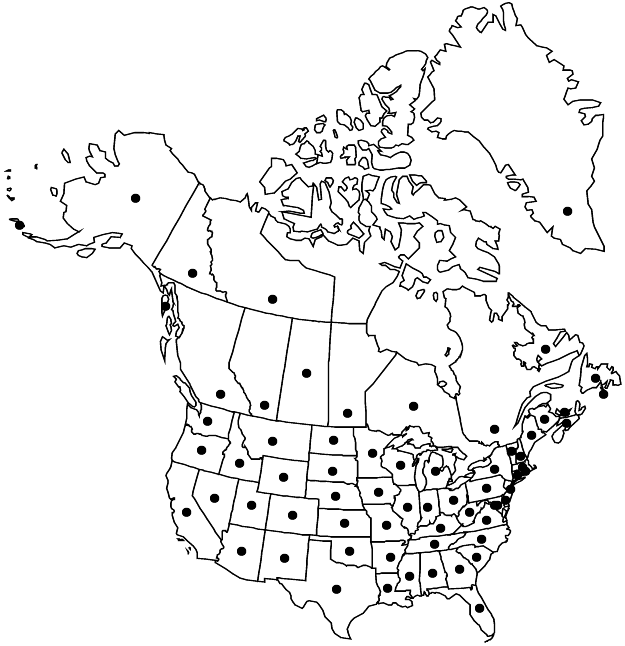Cerastium fontanum subsp. vulgare
Willdenowia 12: 37. 1982.
Plants perennial (very rarely annual). Inflorescences usually eglandular, occasionally viscid and glandular. Petals equaling sepals. Capsules 9–13 mm. Seeds 0.4–0.9 mm; tubercles small. 2n = ca. 122–152, usually 144.
Phenology: Flowering throughout growing season.
Habitat: A common weed in grassy places: lawns, roadsides, pastures, open woodlands, wastelands
Elevation: 0-3000 m
Distribution

Greenland, St. Pierre and Miquelon, Alta., B.C., Man., N.B., Nfld. and Labr., N.W.T., N.S., Ont., P.E.I., Que., Sask., Yukon, Ala., Alaska, Ariz., Ark., Calif., Colo., Conn., Del., D.C., Fla., Ga., Idaho, Ill., Ind., Iowa, Kans., Ky., La., Maine, Md., Mass., Mich., Minn., Miss., Mo., Mont., Nebr., Nev., N.H., N.J., N.Mex., N.Y., N.C., N.Dak., Ohio, Okla., Oreg., Pa., R.I., S.C., S.Dak., Tenn., Tex., Utah, Vt., Va., Wash., W.Va., Wis., Wyo., Europe, introduced worldwide.
Discussion
Small annual forms of subsp. vulgare can be difficult to separate from Cerastium pumilum. The latter has smaller capsules, narrower and sharply acute sepals, and short, glandular hairs on the sepals, bracts, and inflorescence.
Selected References
None.